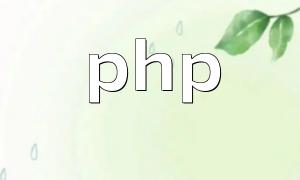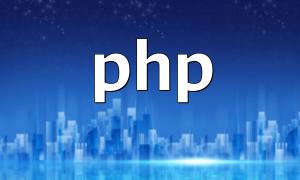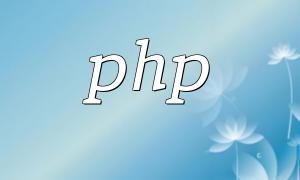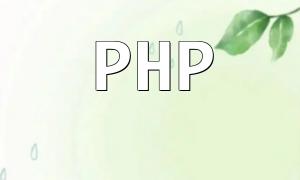PHP is a widely used programming language, but its flexibility also makes it prone to security vulnerabilities that attackers can exploit for malicious purposes. Understanding PHP's underlying development principles and related protection strategies is crucial for developers. This article introduces common security vulnerabilities in PHP development and offers effective defense measures.
Injection attacks occur when attackers manipulate user inputs to inject malicious code into an application, gaining control over it. The most common injection attacks in PHP are SQL injection and command injection.
<?php<br>$username = $_POST['username'];<br>$password = $_POST['password'];<br>$sql = "SELECT * FROM users WHERE username = '$username' AND password = '$password'";<br>$result = mysqli_query($conn, $sql);
In the above code, if user inputs are not filtered or escaped, an attacker can craft input to bypass the SQL query's constraints and execute arbitrary SQL commands, such as deleting tables or stealing sensitive information.
File inclusion vulnerabilities occur when an application has a flaw in the process of loading files. Attackers can craft malicious file paths to load arbitrary files, gaining control over the application.
<?php<br>$filename = $_GET['filename'];<br>include($filename);
This code does not filter or validate user input. An attacker can construct a malicious path to load system files or sensitive information, leading to data leakage or system compromise.
To prevent the aforementioned vulnerabilities, we can implement the following protective measures:
We need to filter and validate user input data to prevent malicious inputs.
Using prepared statements or parameterized queries can prevent SQL injection attacks.
<?php<br>$username = mysqli_real_escape_string($conn, $_POST['username']);<br>$password = mysqli_real_escape_string($conn, $_POST['password']);<br>$sql = "SELECT * FROM users WHERE username = '$username' AND password = '$password'";<br>$stmt = $conn->prepare($sql);<br>$stmt->execute();
By restricting user input to load only specific files and filtering and validating file paths, file inclusion vulnerabilities can be effectively prevented.
Ensure proper access control and permission management when designing and developing applications to prevent unauthorized access to sensitive data.
Follow secure coding practices as recommended by PHP's official documentation. Regularly perform vulnerability scans to identify and address potential security risks.
By thoroughly understanding PHP's underlying development principles, security vulnerabilities, and implementing effective protection strategies, developers can significantly improve the security of their applications and minimize potential risks. During development, security should always be a top priority, and developers should stay updated with new security threats and defense strategies. Only by remaining vigilant about security can we better protect user data and privacy.
The above code examples are for demonstration purposes only. In actual applications, improvements and adjustments should be made based on specific circumstances.









